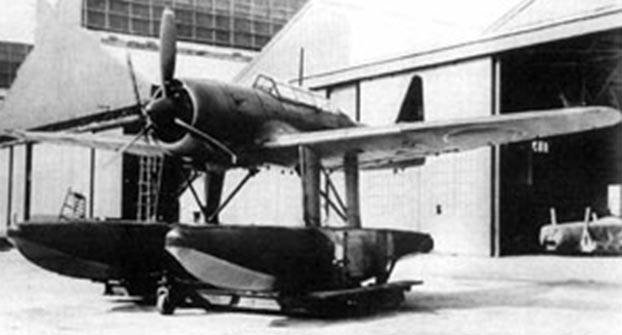In World War Two, the Aichi E16A Zuiun, (also called “Paul” by the Allied Forces and translated into “Auspicious Cloud”) was a dedicated reconnaissance floatplane and part-time dive-bomber for the Empire of Japan. This WW2 Japanese aircraft was considered a great all-around floatplane; however, its delivery was too late in the war to achieve much use. The design and development of this WW2 floatplane was a conventional, low-wing monoplane equipped with two floats and had the unusual (for a seaplane) feature of being equipped with dive brakes to allow it to operate in a secondary role as a dive bomber.
This WW2 Japanese aircraft was first used in military service in May 1942; this was also the time when the plane’s prototype first took off. The Aichi E16A Zuiun however was introduced in the year 1944, which was already too late to have changed the outcome of the war to favor Japan.
The system of this WW2 Japanese aircraft was in every aspect an excellent float-plane. However, it was introduced to the skies that were already controlled and maintained by the different Allied WW2 aircrafts. Because of this, the use and production of E16A planes became limited.
The E16A was a typical representation of Japanese floatplanes. This WW2 Japanese aircraft came from the improvement and revision of the E13A “Jake” floatplane series design which was also manufactured and produced by the Aichi aircraft firm. As compared to the earlier E13A “Jake” design, the E16A “Paul” can carry heavier cannons, machine guns and bombs, and has accommodation for a two man crew (a pilot and a rear cock-pit gunner). Despite the advantages of E13a “Paul” in terms of performance, it never completely replaced the E13A design.
The standard armaments for this plane were two 20mm forward-fixed cannon in the wings and a single 7.7mm machine gun for the rear gunner. Even though the primary use of E16A “Paul” was of carrier-based reconnaissance, the under fuselage position of this WW2 Japanese aircraft was utilized for strikes runs.
In 1944, the Allied Forces had established superiority in the Pacific skies, and as a result, the E16A suffered from high losses in the Philippines. Unfortunately in that time, the surviving E16As were lost when they were used in kamikaze attacks in the closing days of the war.
During 1944 there were about 256 Aichi E16A built.
| Allied Codename: | Paul |
| Type: | reconnaissance floatplane/dive bomber |
| Design: | Aichi Kokuki Kabushiki Kaisha Design Team |
| Engine(s): | 1 x Mitsubishi Mk*D Kinsel 54 14-cylinder radial engine |
| Max Speed: | 273mph (439kmh;237kts) |
| Max Range: | 1,491miles (2,400km) |
| Ceiling: | 32,808ft (10,000m; 6.2miles) |
| Length: | 35.53ft (10.83m) |
| Width: | 42.03ft (12.81m) |
| Height: | 15.72ft (4.79m) |
| Empty Weight: | 2,945 kg (6,490 lb) |
| Loaded Weight: | 4,553 kg (10,000 lb) |
